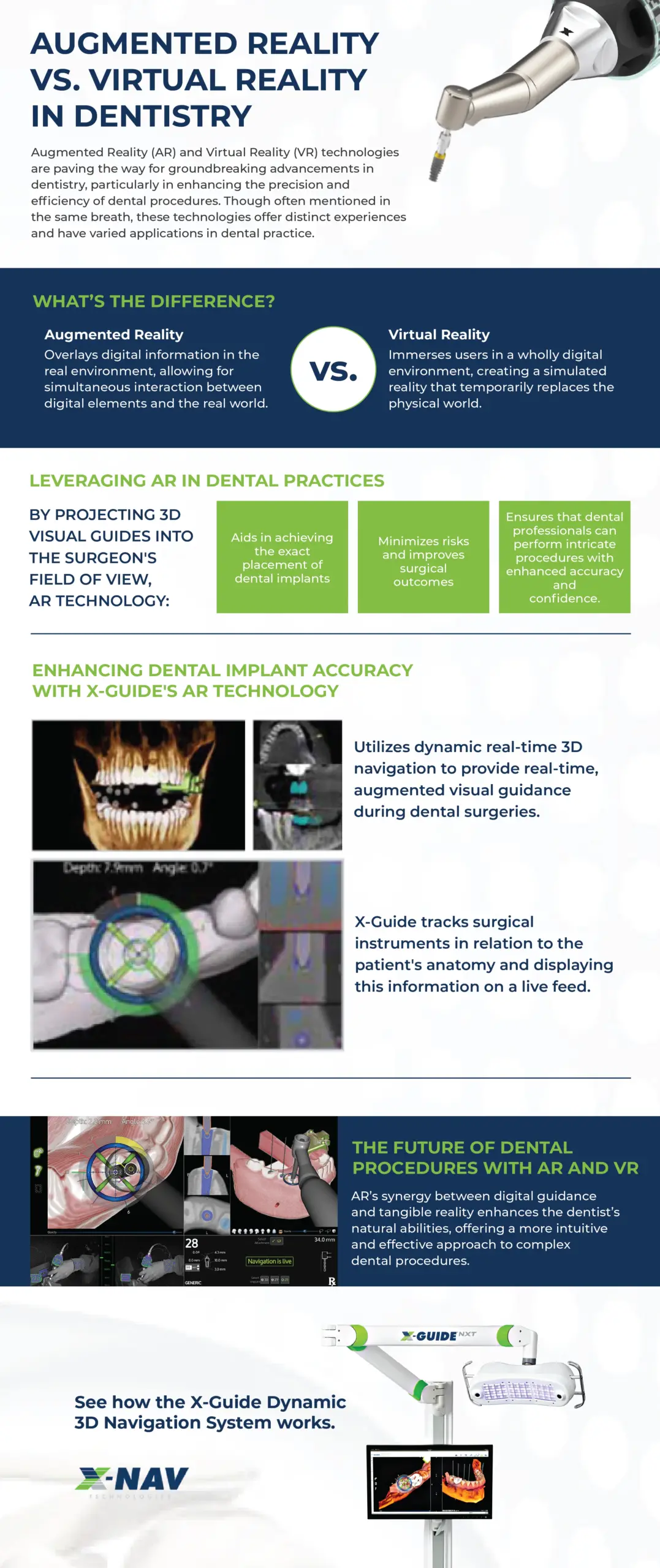Augmented Reality vs. Virtual Reality in Dentistry
Augmented Reality (AR) and Virtual Reality (VR) technologies are paving the way for groundbreaking advancements in dentistry, particularly in enhancing the precision and efficiency of dental procedures. Though often mentioned in the same breath, these technologies offer distinct experiences and have varied applications in dental practice.
The Distinction Between AR and VR in Dentistry
The fundamental difference between AR and VR lies in their approach to digital integration with the real world. VR immerses users in a wholly digital environment, creating a simulated reality that temporarily replaces the physical world. In contrast, AR overlays digital information in the real environment, allowing for simultaneous interaction between digital elements and the real world. This distinction is critical in dentistry, where combining digital precision with direct interaction with the patient’s anatomy can significantly enhance procedural outcomes.
Leveraging AR in Dental Practices
AR technology’s capability to overlay digital information without obstructing the practitioner’s view is particularly beneficial in dental surgery, such as implantology. By projecting 3D visual guides into the surgeon’s field of view, AR technology aids in achieving the exact placement of dental implants, thereby minimizing risks and improving surgical outcomes. The direct overlay of digital guidance ensures that dental professionals can perform intricate procedures with enhanced accuracy and confidence.
Enhancing Dental Implant Accuracy with X-Guide’s AR Technology
At the forefront of AR application in dentistry is the X-Guide system, designed to improve the precision of dental implant placement. This technology uses dynamic real-time 3D navigation to provide real-time, augmented visual guidance during dental surgeries. By precisely tracking surgical instruments in relation to the patient’s anatomy and displaying this information on a live feed, X-Guide facilitates the accurate execution of the preoperative plan. This system exemplifies how AR can support dental professionals in maintaining their conventional workflow while significantly reducing the margin for error, leading to improved procedural efficiency and patient outcomes.
The Future of Dental Procedures with AR and VR
Although both AR and VR technologies hold the potential to transform dental practices, AR’s noninvasive integration with real-world practice renders it particularly advantageous for dental applications. This synergy between digital guidance and tangible reality enhances the dentist’s natural abilities, offering a more intuitive and effective approach to complex dental procedures. As augmented reality in dentistry evolves, its applications in dental education, planning, and surgery will broaden, promising a future where dental care is more precise, less invasive, and tailored to individual patient needs.
While AR and VR each play pivotal roles in advancing dental technology, AR’s unique ability to blend digital information with the natural world places it at the forefront of surgical innovation in dentistry. As these technologies continue to develop, the possibilities for enhancing dental practice and patient experiences seem boundless, signaling a new chapter in dental healthcare.





